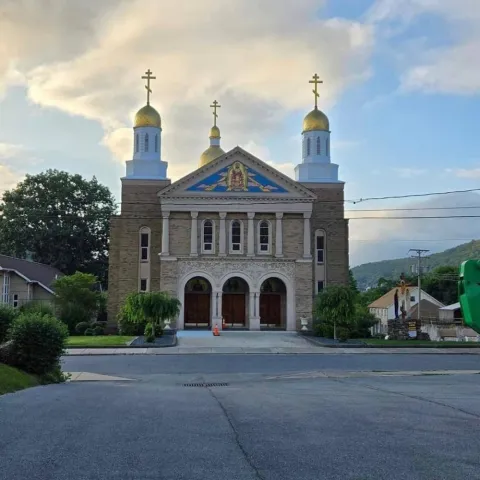Johnstown
Johnstown came into being in the year 1800 when an Amish farmer, Joseph Johns (or Schantz, a Dutch form of John), laid out the first village lots on property he had purchased in 1793. He had been living on the farm and improving it since 1794, and when he learned that a new county was about to be formed (Cambria County was formed in 1804), he established the village in hopes it would be chosen as the county seat. He named his new settlement Conemaugh Old Town.
It was a time of land, timber, and mineral property speculation, so for the first few years, the property changed hands often. Joseph Johns sold it to William Hartley and Dr. John Anderson 1807 for $5,000. They were sold to John Holliday in 1808. Holliday built an iron forge on Stonycreek but abandoned it after a flood (Johnstown's first disaster) destroyed his equipment. Holliday sold the property to Peter Levergood in 1811 for $8,000. Levergood sold in 1813 to George Brenizer and Thomas Burell for $12,583, but they could not make the agreed upon payments, and Levergood repurchased the property at a sheriff sale for $6.18! Levergood became the primary developer of early Johnstown, keeping an interest in the property until he died in 1860.
The first public school was built in 1811 on a lot Joseph Johns set aside for that purpose—today, it is the location of Joseph Johns Junior High School. By 1813, the town had a grist mill, a tannery, and a distillery.
The first major commercial enterprise in the town was the shipping of iron. Pig iron was hauled by horses from the Juniata Valley and stored in Conemaugh Old Town or refined there into iron bars. Flatboats and some keelboats were built, and when the spring floods raised the river, the iron was shipped down to Pittsburgh.Early growth was slow. The town had a population of about 50 in 1810 and around 200 in 1820. The town was incorporated as Conemaugh Borough in 1831. In 1834, the local council renamed the town Johnstown in honour of its founder.
The town finally began to experience significant growth in the 1830s. The Pennsylvania Canal System was constructed, and Johnstown became one of the main towns on the route. As the name implies, the route was primarily canals and river systems, but over the Allegheny Mountains, a short rail line was built to connect waterways, with one terminus at Johnstown. By 1850, the town's population was 1260.
In the 1850s, Johnstown transformed from a transportation center to an iron and steel manufacturing center. The Pennsylvania Railroad was completed through the city in 1852, effectively making the canal system obsolete. That same year, the Cambria Iron Company was founded, later absorbed into Bethlehem Steel Company.In the 1860s, 1970s, and early 1980s, Johnstown saw continued growth. Another railroad came through town—the Baltimore and Ohio. Horse-drawn streetcars served the city streets, and there was free mail service. Electricity, natural gas, water, and telephone services were established.
Then, on May 31, 1889, disaster struck. A poorly maintained dam on the South Fork gave way, and a great flood scoured the valley. Over 2,000 people were killed, and most of the town was utterly destroyed. It was the worst peacetime tragedy in American history at that time.
After the disaster, Johnstown and seven surrounding boroughs voted to consolidate into a single city. Gradually, the community rebuilt itself and grew into the thriving city we see today.But disaster was not done with the city. On St. Patrick's Day in 1936, another flood occurred. It was not on the scale of the 1889 tragedy, but several people were killed, and the city sustained substantial damage. This spurred the development of an $8 million flood-control program, completed in 1943.
Despite the flood-control efforts, another flood hit the city on July 20, 1977. A phenomenal amount of rain, 11.82 inches over a ten-hour period, fell on the valley and surrounding mountains. The weather service said such rain would be a once-in-5,000 to 10,000-year occurrence. This flood caused 78 deaths and over 200 million dollars worth of damage.
But Johnstown sprang back, as it always has. Today, it is a vibrant city of over 20,000 persons.
